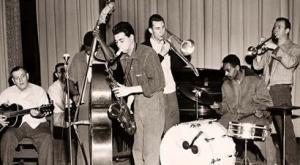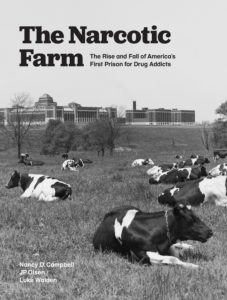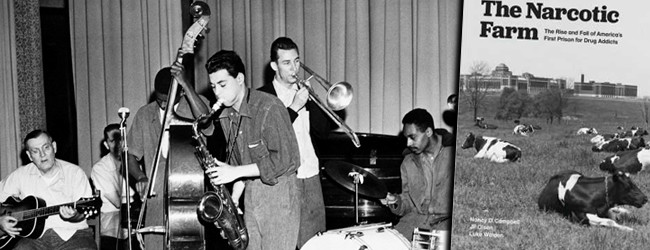
During the middle of the century, when drugs began to take widespread hold on the country, treatment for addiction was still in it’s primordial infancy. Drug addicts were often jailed instead of treated, perpetuating the vicious cycle of addiction.
Before state or local drug treatment facilities were even conceived, one 1,050 acre piece of farmland known as The Narcotic Farm outside of Lexington, Kentucky lead the forefront of addiction treatment, and as is so often does, music organically grew as a remarkable tool for the aide in recovery.
The federal government set up the Narcotic Farm in 1935 as an experimental treatment and research facility; a place to house drug offenders and research the cure for addiction. Nearly all who were arrested as drug offenders in the U.S. were shipped to “the Narco”, as it was called, and by the 1950s, Narco was ground zero for American drug culture.
Most fans of Jazz knows that marijuana, cocaine, and other drugs went hand-in-hand with many of the popular musicians and clubs during the Jazz and Swing heyday of the 30s, 40s and 50s. Jazz legends such as Cab Calloway and Mezz Mezzrow often talked of the drug culture among musicians of the time. Working musicians were easy targets for police, and many found themselves residents of the Narcotic Farm. Chet Baker, Elvin Jones & Sonny Rollins were just a few of the who’s who of musicians that called Narco home, as well as noted author William S. Burroughs, who wrote about the farm in his 1953 novel, Junkie.
The center supplied musicians with working instruments and even practice rooms and a theater that seated more than 1,000 for recitals. The farm quickly earned a reputation as a workshop for musicians, and it was rumored that some artists would intentionally get arrested or voluntarily check themselves into Lexington’s treatment programs, just to be able to be a part of the thriving Jazz music scene that became the anthem for the flagship “junkie” treatment culture. The Narcotic Farm soon gained a reputation around Lexington, and eventually the rest of the country, as a Jazz music mecca. Musicians poured their efforts into trumpets and horns in the absence of weed and heroin, and music became a driving force in recovery. In 1964, a Jazz band composed entirely of Lexington inmates even played for families across the country on Johnny Carson’s The Tonight Show.

Despite it’s widespread legacy, the music can tragically only exist in memories and pictures — no audio of the great music that existed outside of Lexington survived, and the performance for The Tonight Show was accidentally erased decades ago. Despite the travesty of lost music, hundreds of musicians found inspiration, influences and sobriety at the Narcotic Farm.
The farm itself made great strides in the research and treatment of drugs, including identifying TCH as the psychoactive ingredient in marijuana, the use of methadone to treat heroin addiction, and the use of conditioning in combating relapses into drug abuse. According to a recent documentary The Narcotic Farm: the Rise and Fall of American’s First Prison for Drug Addicts, possibly the most profound breakthrough was the farm’s success in changing the way Americans saw drug offenders, into “people suffering from a chronic, relapsing disorder that affects public health,” says Nancy Campbell, a co-author of the recent book, aptly named The Narcotic Farm: The Rise and Fall of America’s First Prison for Drug Addicts. In the mid-1970s, the farm as a treatment facility was shut down, partially due to the creation of a network of state and local treatment centers, which themselves largely had the Narco to thank for their models of drug treatment.


